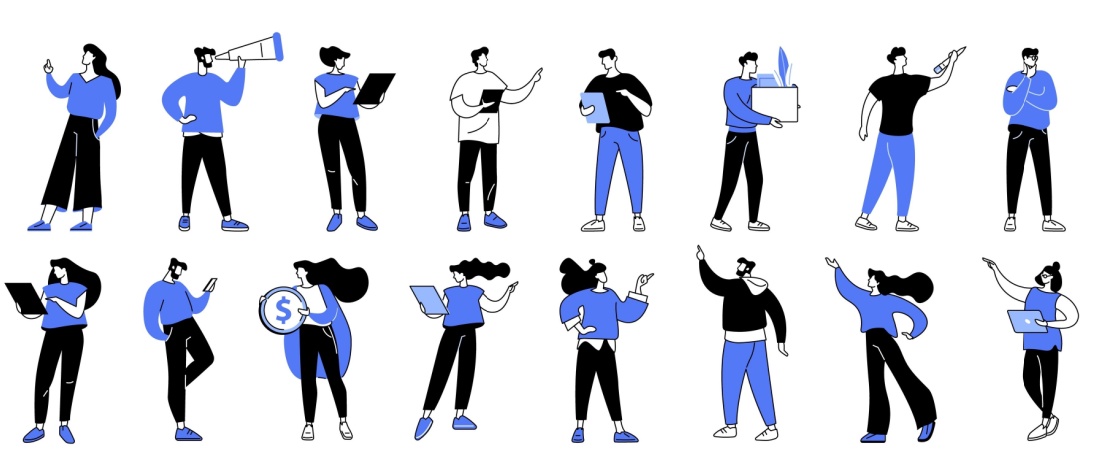Turning off the mute button: How to hear from everyone at your next meeting
When joining a video call or walking into a meeting room, the experience of participating in a group discussion can be extremely intimidating for some. Whether it’s due to the people in the room or a challenging past experience, group discussions can make some attendees feel vulnerable, depending on the context, topic and norms that are established for participation. Not all meetings are created equal, and by taking the time to plan out your approach upfront, you can create an environment where everyone can participate.

Understanding why some of your colleagues might feel uncomfortable
Before you can plan an effective group meeting, it’s helpful to understand why some attendees might feel uncomfortable. Tammy Shubat, Director of Partnerships and Public Affairs at the Ontario Physical and Health Education Association (Ophea), recognizes a variety of factors that might come into play. “For starters, managing meetings with hierarchical roles, like managers and junior staff, can be risky, depending on the culture of the organization.” If you’re not fully aware of these dynamics, small signs might emerge, like junior staff opting to not speak first, always agreeing with their manager or looking at certain individuals for approval.
And while we’d like it not to be the case, these power dynamics extend well beyond job titles. Shubat explains, “Power and privilege are always at play, even when we don’t want them to be. As a result, folks who have historically experienced marginalization because of their race, faith, gender, class, sexual orientation, or any combination of these may not have traditionally felt valued in a group setting.” While you cannot control some of these past negative experiences, you can always do your best to create group norms and expectations for how you facilitate group meetings and conversations.
Bring purpose and preparation to your meetings
Understanding some common mistakes can be a great place to start to set your meetings up for success. Shubat outlines a few common missteps and solutions to mitigate them:
- Always meet with purpose: Not identifying a clear purpose for a meeting or planning session is one of the most common mistakes facilitators make. If you can clearly articulate the purpose, you can avoid mechanical meetings with agenda items that don’t resonate with your attendees.
- Invite the right people to the party: Once you have a clear purpose, it is important to determine who actually needs to be involved. All too often, we over-invite people to meetings who don’t need to be there. They, in turn, feel their time has been wasted, and they definitely won’t contribute.
- Set the rules of engagement: Failing to articulate the rules of engagement is another common mistake. When you fail to share these rules, staff will likely assume that they should just use common sense. However, each staff member has their own definition of “common sense,” and this lack of guidance can result in angry, frustrated or disengaged participants. Always set the rules in advance, let others inform or add to the rules and remind them of the rules when things go off track.
Techniques to try out at your next meeting
Keeping all of this in mind, the stakes might feel a bit high going into your next meeting. But don’t worry, Shubat has tested some techniques that can steer you in the right direction:
- Share information in advance: Offer a preparatory package that enables staff to participate as meaningfully as possible. Don’t spend most of your meeting time briefing people on something they could have read in advance. Spend your time asking them questions about the pre-reading materials that allow them to seek clarification and bring new curiosities to the conversation.
- Create a variety of entry points: Meetings don’t need to rely on one type of engagement. Keep your meetings dynamic with a round table sharing opportunity, a written sharing opportunity, a small group sharing opportunity and a large group discussion.
- Encourage equal discussion: Set rules of engagement that encourage discussion. Simple directions, like “once you’ve shared, you can’t share again for three minutes,” or “build on someone’s thought before sharing your own,” can be a way of showing you really want to hear from everyone.
- Empower staff to support each other: Employ a technique that invites others to support you in having everyone participate. Try using a green card that staff can pass to a colleague they haven’t heard from yet to show them that their opinion is valuable and important to the conversation.
With all of the pressures of the workday, it’s easy to feel like you’re constantly moving from meeting to meeting. However, with a little preparation and openness to trying some new approaches, you may be able to challenge the status quo and facilitate meetings that keep the attention of everyone around the table – or on the screen. While it may take some time to understand the best way to engage your colleagues, you might be surprised, and encouraged, by the results.
Enter some text…
